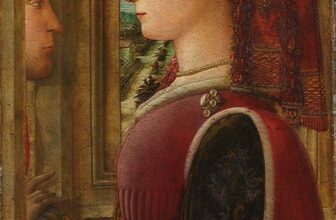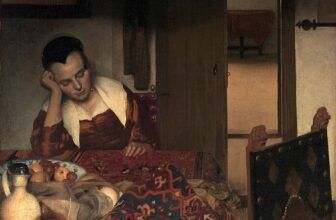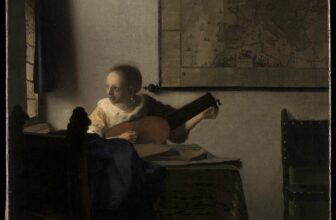
Queen Christina of Sweden: The Enigmatic Monarch Who Defied Convention
In the history of European history, few monarchs have captivated historians and the public alike quite like Queen Christina of Sweden. Born into a turbulent age of warfare and religious transformation, Christina reigned not only over a kingdom but also over the imagination of her time and beyond. Known for her intelligence, eccentricity, and refusal to conform to the traditional expectations of royalty and gender, Christina’s story is one of audacity, complexity, and continual reinvention.
A Child Queen: Destiny Amidst War
Christina Alexandra of Sweden was born on December 18, 1626, in Stockholm, the only legitimate child of King Gustavus Adolphus and Queen Maria Eleonora of Brandenburg. From the moment of her birth, Christina’s life was marked by both tragedy and destiny. Her father, Gustavus Adolphus, one of Europe’s most formidable military leaders, was deeply involved in the Thirty Years’ War, a brutal conflict that ravaged much of the continent.
Christina was only six years old when her father died heroically at the Battle of Lützen in 1632. In his will, Gustavus Adolphus had ensured his daughter would inherit the throne, and thus began one of the most extraordinary reigns in Scandinavian history. Though still a child, Christina was proclaimed Queen of Sweden under a regency led by Chancellor Axel Oxenstierna.
Sweden, a rising power in Europe, was fiercely Protestant, and the regency carefully guarded the young queen’s education. Christina was raised not as a typical princess but as a ruler-in-training. She received an exceptional education in the humanities, sciences, and philosophy. Fluent in several languages and a voracious reader, Christina developed a lifelong passion for intellectual and artistic pursuits, making her court a beacon of the Age of Enlightenment.
Breaking the Mold: The Making of a Monarch
By the time Christina assumed full royal power at the age of eighteen, she was already a singular figure. She rejected the traditional roles expected of women, particularly queens. Her appearance, plain by aristocratic standards, and her disdain for feminine fashion baffled and scandalized many. She wore men’s clothing, disdained marriage, and surrounded herself with male intellectuals and artists.
Christina openly disliked the institution of marriage and repeatedly stated she had no intention of taking a husband. Her court was filled with rumor and speculation about her sexuality, her habits, and her intentions. Her closest relationships were with women, particularly Ebba Sparre, a noblewoman whom Christina affectionately referred to as her “bedfellow” and “beloved.” Their surviving letters reflect deep emotional intimacy and affection, though the exact nature of their relationship remains a subject of historical debate.
Christina’s refusal to marry was not just personal, it was political. Marriage meant producing an heir, which would potentially limit her independence. “I am not suited to marriage,” she said, “neither in mind nor body.” Her courtiers were dismayed, as a childless queen posed a threat to dynastic stability. But Christina remained firm. She ruled as a sovereign in her own right and refused to become a vessel for a male consort’s ambitions.
Patron of the Arts and Philosophy
Though her reign was short, Christina transformed the Swedish court into a center of learning and culture. She invited scholars, artists, and philosophers to her court, most notably the French philosopher René Descartes, whose arrival in the harsh Swedish winter of 1649 at her invitation would ultimately lead to his death from pneumonia.
Christina’s reign was marked by immense cultural development, but also political and economic strain. Her expensive tastes in art and books, as well as her desire to emulate the splendor of other European courts, led to increased taxation and growing discontent among her advisors and the nobility. Furthermore, her erratic behavior and aloof manner made her an unpredictable monarch.
The Conversion That Shocked Europe
Perhaps the most shocking chapter of Christina’s life came in 1654 when, at the age of twenty-seven, she did the unthinkable, she abdicated the throne.
Her reasons were complex. On the surface, she claimed exhaustion and an inability to bear the burden of rule. But deeper currents were at play. Christina had become increasingly interested in Catholicism, the very religion her father had fought against. For a Protestant queen of a staunchly Lutheran nation, such a conversion was not only scandalous, it was treasonous.
Christina had been in secret correspondence with Jesuit priests for years. Her deep intellectual curiosity and dissatisfaction with the rigid structures of Lutheran orthodoxy had drawn her toward the rituals and mysticism of the Catholic Church. She found in Catholicism a sense of personal salvation and philosophical richness she felt was missing in Swedish Protestantism.
Knowing she could not convert and remain on the throne, Christina made a calculated decision: she would give up her crown in exchange for her faith.
On June 6, 1654, in a ceremony rich with symbolism, Queen Christina abdicated in favor of her cousin, Charles X Gustav. She left Sweden under the cover of ambiguity, officially citing fatigue and ill health. Within a year, she publicly announced her conversion to Roman Catholicism in the Italian city of Innsbruck.
A Queen in Exile: The Roman Years
Now a Catholic and no longer a queen, Christina began the next phase of her life in Rome, where she was received as a celebrity by the Vatican and the Pope. Her conversion was a propaganda victory for the Church, which had long sought high-profile converts in Protestant lands. Christina was given a pension, a palace, and a place of prominence in Roman society.
She styled herself “Christina, Queen of Sweden,” even though she held no political power. She immersed herself in the cultural life of the city, becoming a prominent patron of the arts. She supported musicians, painters, and scholars, and transformed her Roman residence, the Palazzo Riario, into a court of creativity and debate. She established the Academia dell’Arcadia, which helped advance Italian literature and music.
Christina’s life in Rome was marked by grandeur and scandal alike. Her behavior, often unorthodox, sometimes abrasive, shocked the more conservative circles of Roman aristocracy. She continued to dress in masculine clothing and remained fiercely independent, traits that earned her both admiration and criticism.
Though she never married, Christina formed numerous close relationships, including with Cardinal Decio Azzolino, a man of intellect and political acumen. Their correspondence suggests a deep connection, perhaps romantic, though likely never consummated.
Return Attempts and Political Intrigue
Though she had left Sweden behind, Christina never gave up the idea of wielding political influence. She attempted several times to secure new thrones for herself, including the crown of Naples and even involvement in French politics. None of these schemes bore fruit, but they demonstrated her enduring ambition and belief in her own destiny.
In 1660, following the death of Charles X Gustav, Christina returned briefly to Sweden, hoping to influence the succession and potentially reclaim power. However, her Catholic faith and erratic behavior ensured her reception was frosty. The Swedish authorities made it clear that she would not be welcomed as queen again. She would make one final trip to Sweden in 1667, but it too ended in disappointment.
Death and Legacy
Queen Christina died in Rome on April 19, 1689, at the age of 62, after a brief illness. She was buried with great honor in St. Peter’s Basilica, an unusual privilege for a woman and a former Protestant queen. Her tomb lies near the crypts of popes and saints, testament to the Church’s enduring appreciation for her conversion.
Christina’s legacy is as layered and enigmatic as her life. In her own time, she was celebrated as a learned patron of the arts and derided as an unstable eccentric. Modern historians view her as a woman far ahead of her time, unwilling to be defined by the expectations of her gender or her station.
Why Did She Abdicate?
In summary, Christina’s abdication stemmed from both personal conviction and political calculation. Her growing dissatisfaction with Protestant orthodoxy, combined with the desire to convert to Catholicism, forced her into an impossible position. Rather than live a lie or jeopardize her conscience, she gave up her throne, an unprecedented act for a monarch of her era. Her words echoed the drama of the moment: “I have decided not to marry, and I shall not be a hypocrite.”
Her decision allowed her the freedom to live according to her principles, though at the cost of her kingdom and reputation. In doing so, she became one of history’s most fascinating examples of a ruler who chose self over state.
The Woman Who Would Not Be Queen
Queen Christina of Sweden remains a singular figure in history, a ruler who broke rules, defied traditions, and refused to be confined by the roles imposed upon her. Whether as a precocious child-queen, a philosopher in a crown, a religious convert, or a patron of the arts, Christina lived her life as a series of bold choices.
Her story challenges simple categorization. Was she a feminist icon or a troubled autocrat? A spiritual seeker or a restless schemer? Perhaps she was all these things and more.
What is certain is that Christina lived on her own terms, governed by her intellect and spirit rather than duty or decorum. She left behind not a dynasty but a legacy, of thought, independence, and the eternal allure of those who dare to be different.




